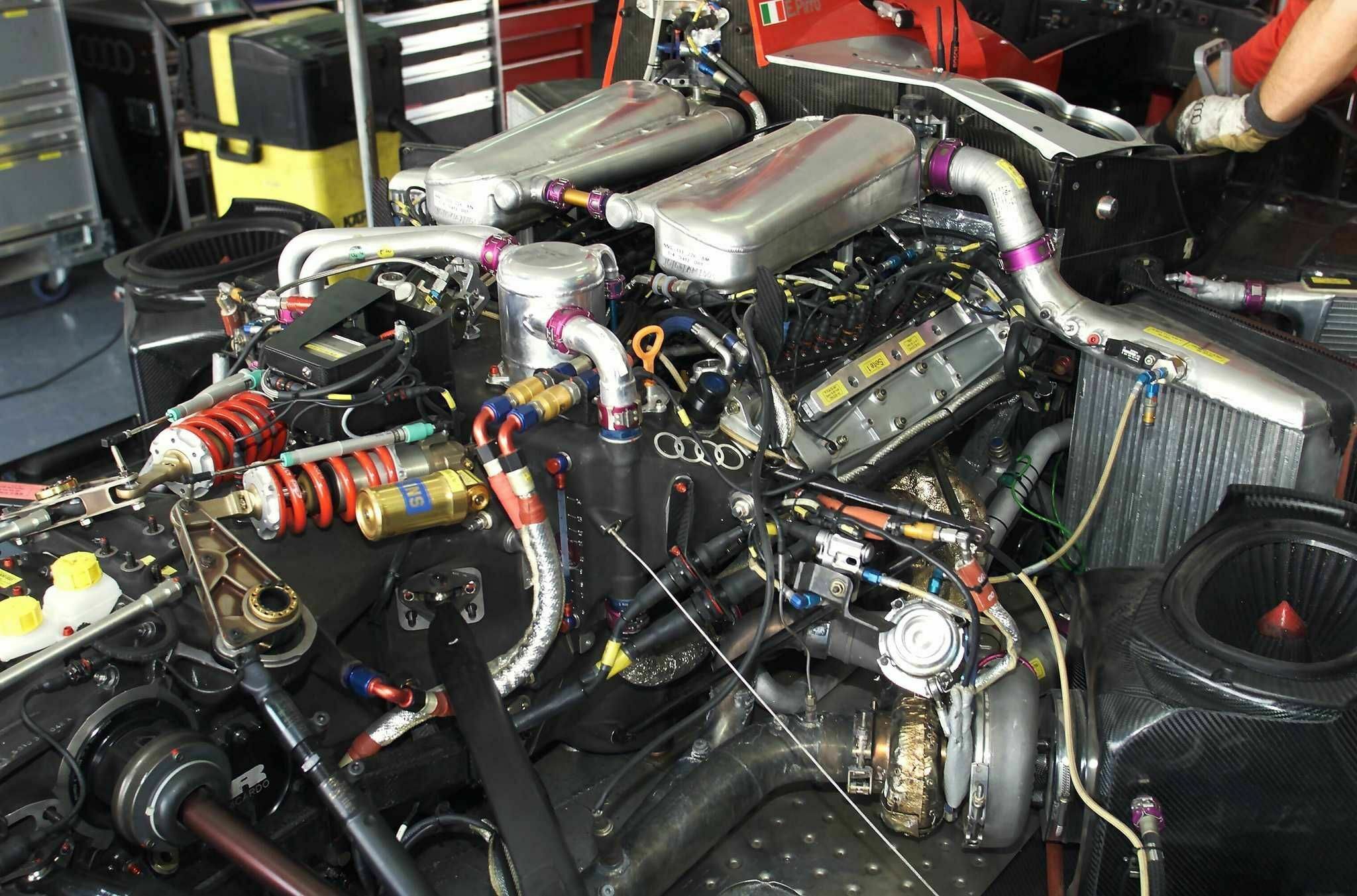High tech - the key to success
Audi has revealed the secret behind its double win at Le Mans 2001: the Audi R8 is the first car with petrol direct injection to win this classic endurance race. For the teams that finished first and second, the use of this new technology meant not only an increase in performance potential, but above all a reduction in fuel consumption of around eight percent. The double success of Audi’s direct-injection vehicles also marks the start of a new era in spark-ignition engine technology: the use of FSI technology in Audi production vehicles is not far away.
The high-tech engine in the Infineon R8 made a decisive contribution to Audi’s double win at Le Mans. This advanced Audi V8 twin-turbo engine is the first of its kind with FSI petrol direct injection.
The advantage of this technology in motor racing is that fuel consumption is reduced by around eight percent compared with the predecessor – an essential requirement for correspondingly longer distances between refuelling stops. Not only that, but the higher engine output that this technology produces can be metered more effectively than is usually the case in race engines.
The first win by a car with a direct-injection petrol engine in this classic endurance race also marks the start of a new era. In the future FSI technology will be able to display its strengths – fuel economy combined with a high power output – not only in motor racing, but also to an increasing extent in production cars where it will provide for an additional fuel saving of up to 15 percent.
Petrol direct injection: as with the TDI technology of diesel engines, this process injects the fuel directly into the combustion chamber, timed accurately to the nearest millisecond. The necessary pressure of over 100 bar is provided by a piston pump, which supplies fuel to the electromagnetically actuated injectors in the cylinder.
The FSI injection principle is capable of two different charge modes: stratified charge operation and homogeneous operation. Stratified charge operation allows particularly economical fuel consumption at part throttle because an ignitable, rich mixture is only necessary around the spark plug. The rest of the combustion chamber contains strata of air/fuel charge with a high air excess.
FSI technology makes this so-called stratified charge possible by controlled charge movement in the combustion chamber and injection directly before the moment of ignition. This enables a considerable reduction in the amount of fuel required for combustion – the most important precondition for the economy of an FSI engine.
At high loads the entire fuel/air mixture in the combustion chamber has the ignitable ratio of lambda=1 (”homogenous operation”). But this also enables a considerable fuel saving, as the victorious R8 engine has proven: owing to high performance requirements, race engines only operate with a homogeneous mixture. Even more systematic use can be made of the fuel consumption benefits of FSI technology in everyday driving situations, when there is a constant switch between lean stratified charge and homogeneous operation.
Vorsprung durch Technik: the new generation of Audi engines will be on show for the first time at the 2001 IAA in Frankfurt. The launch of FSI engines in production vehicles will then follow in the first half of 2002.
